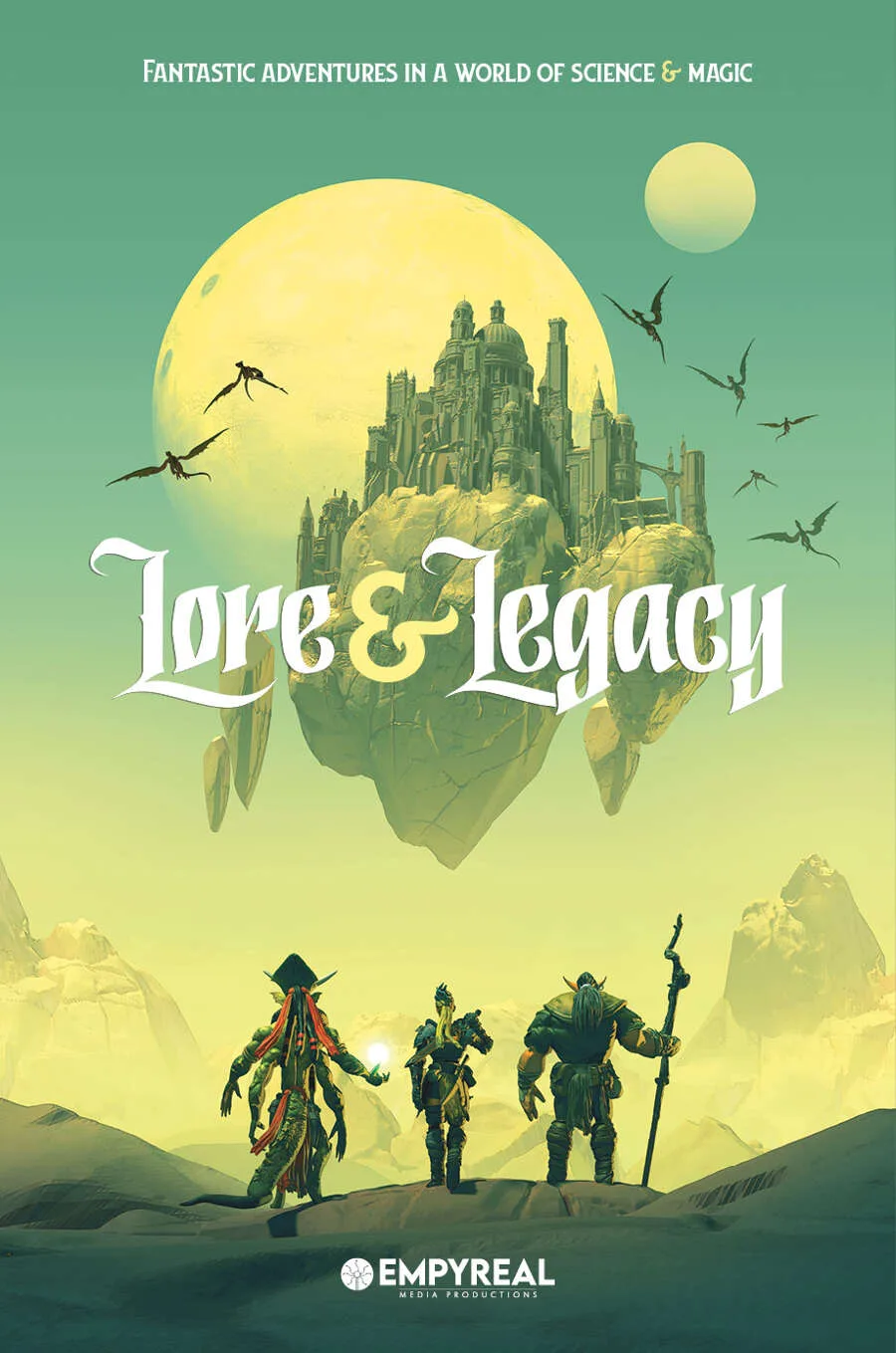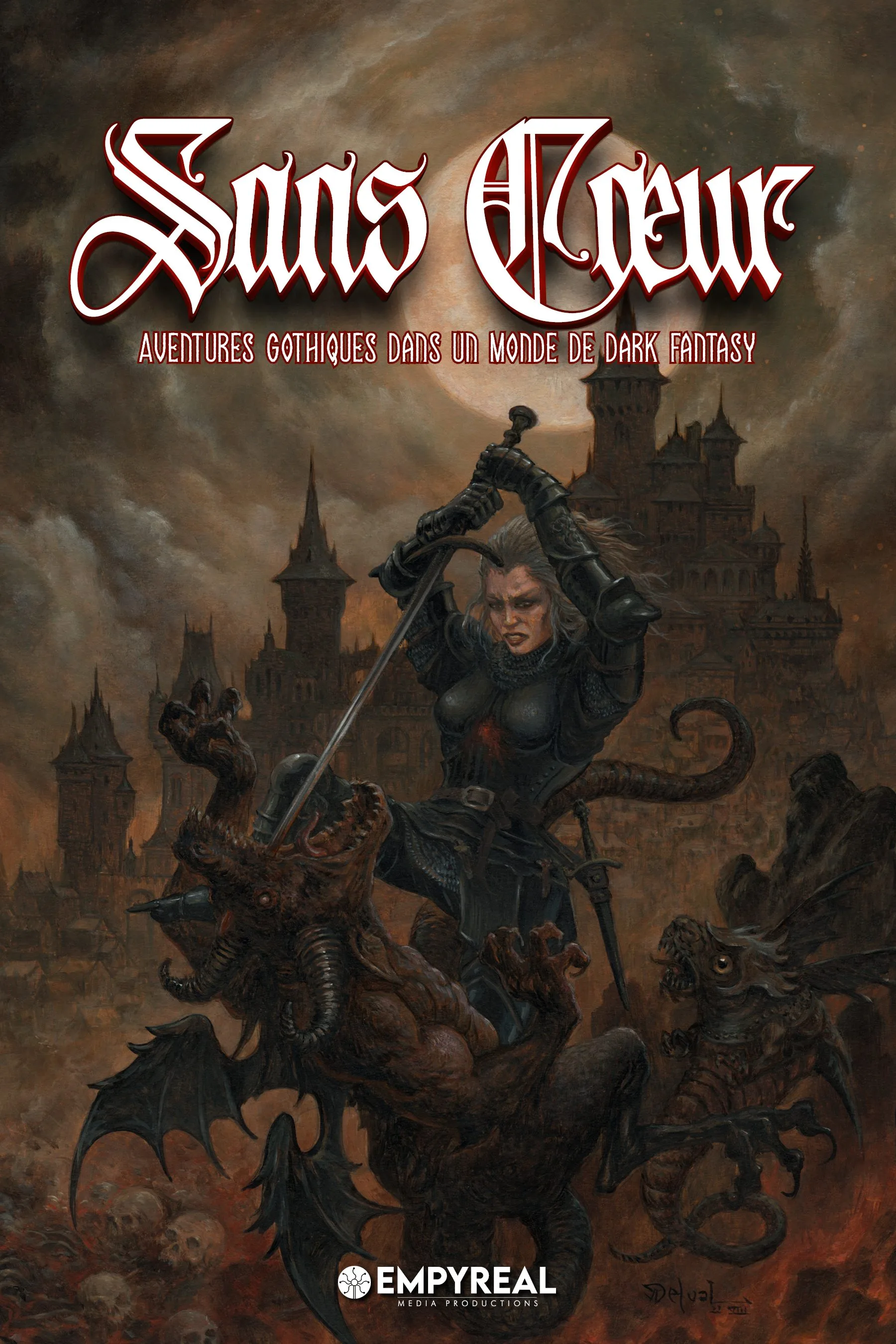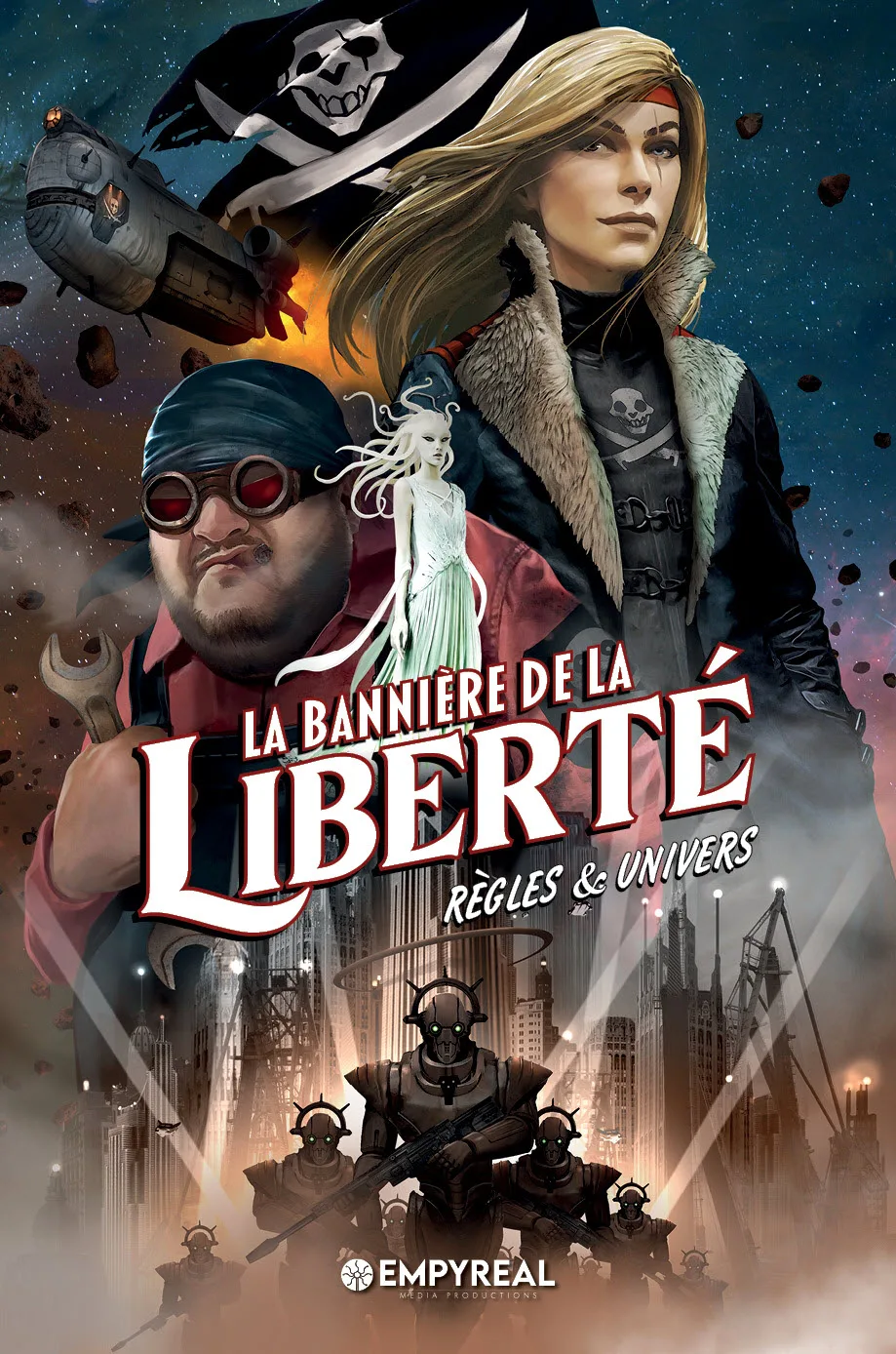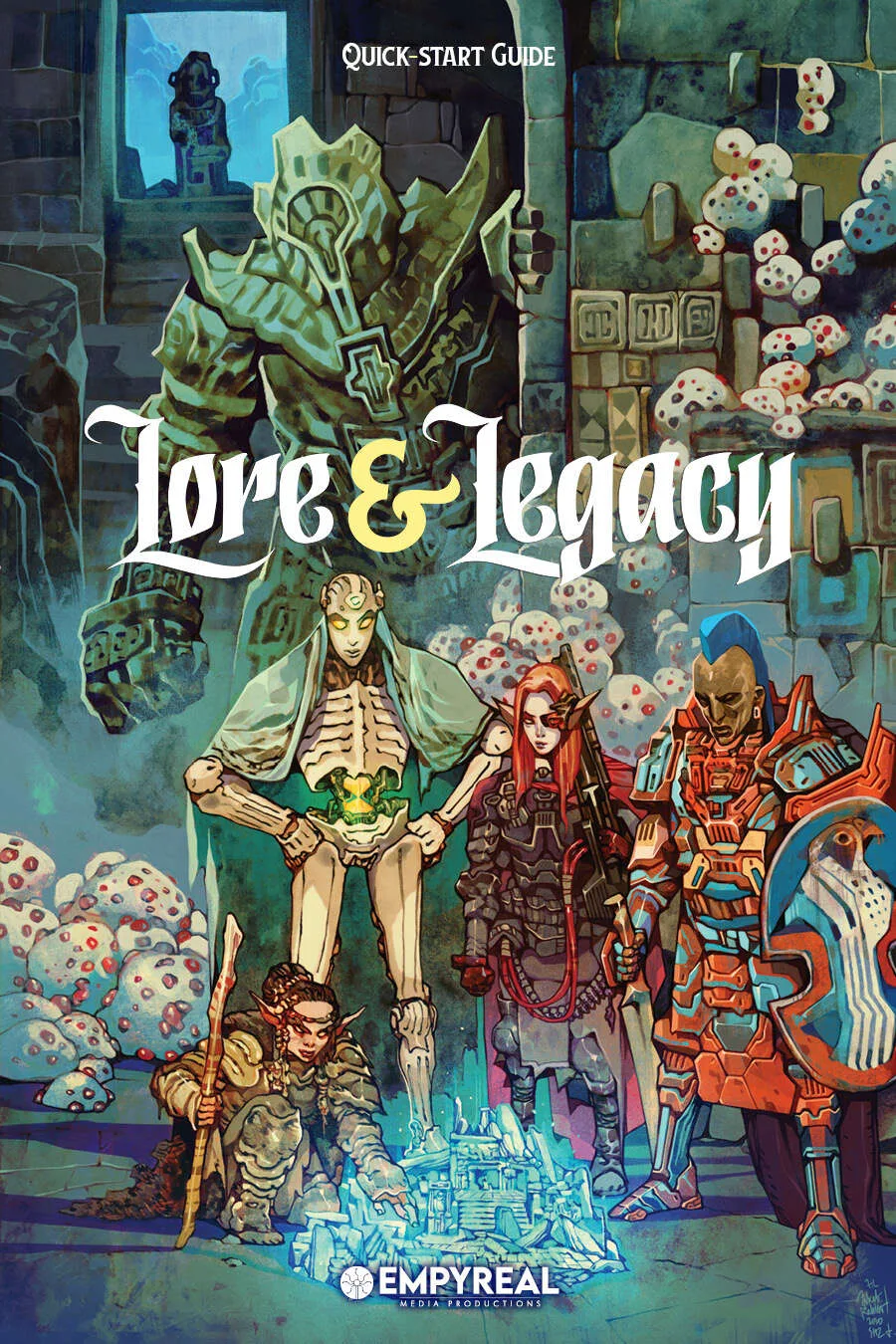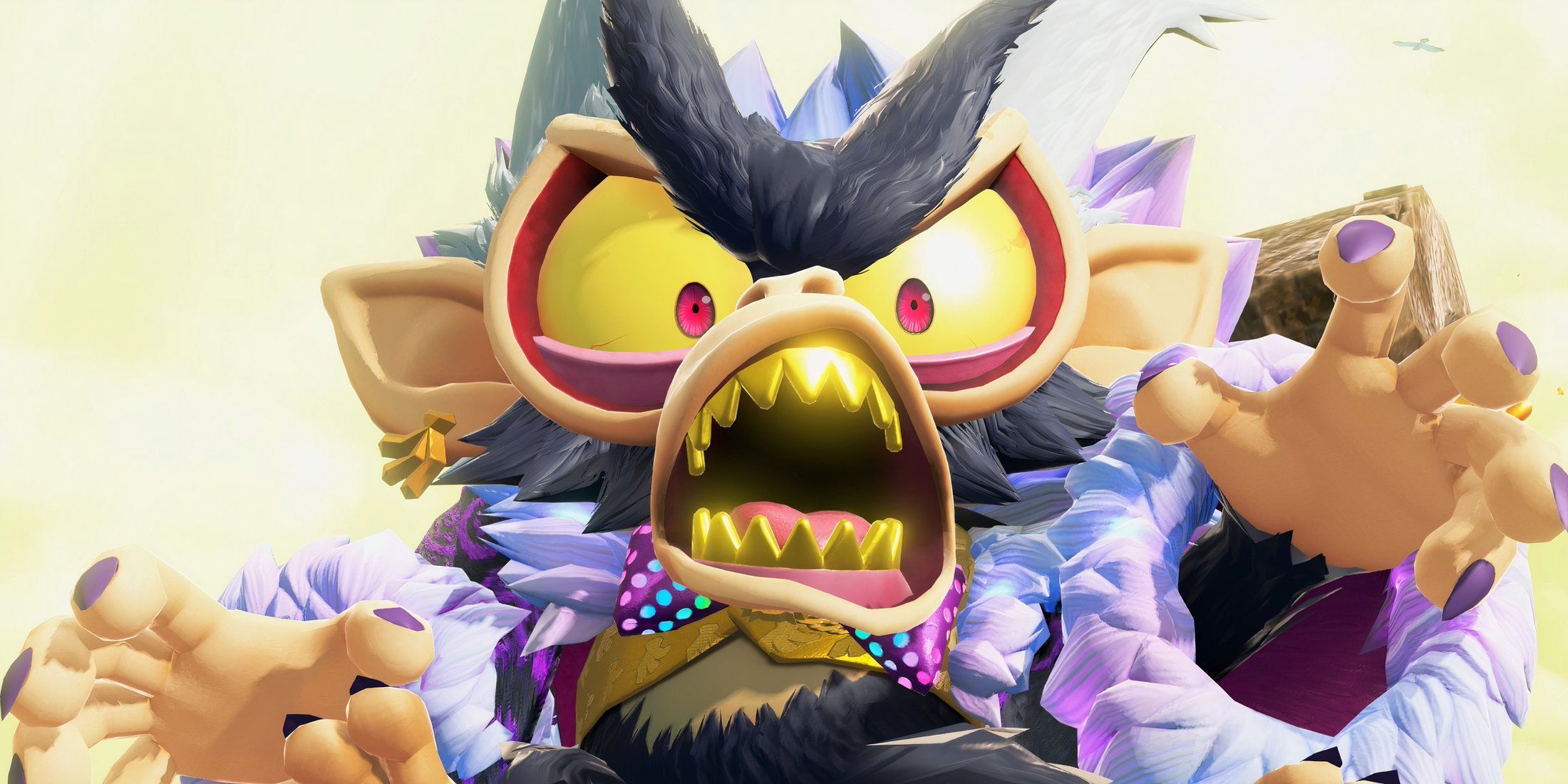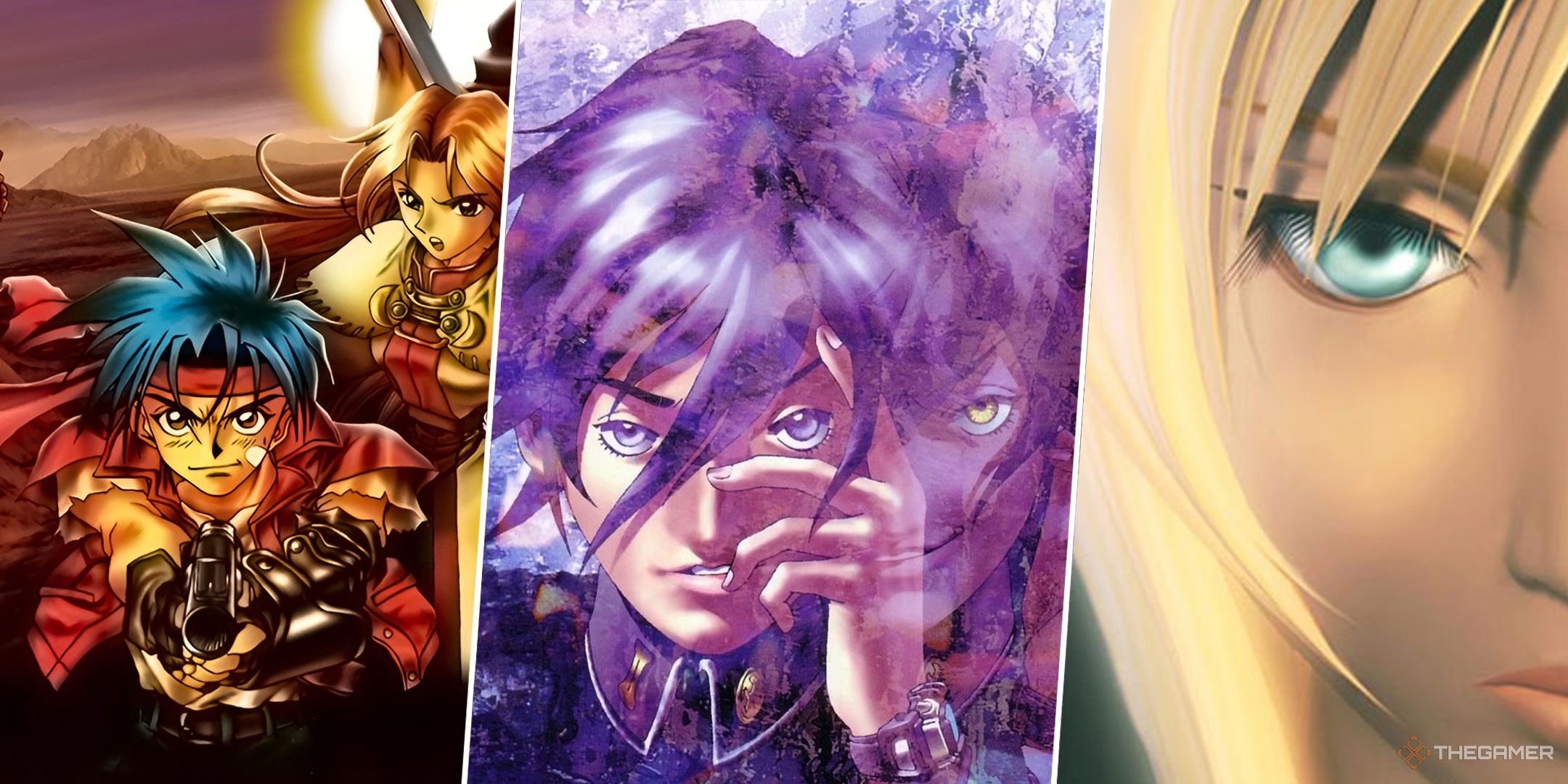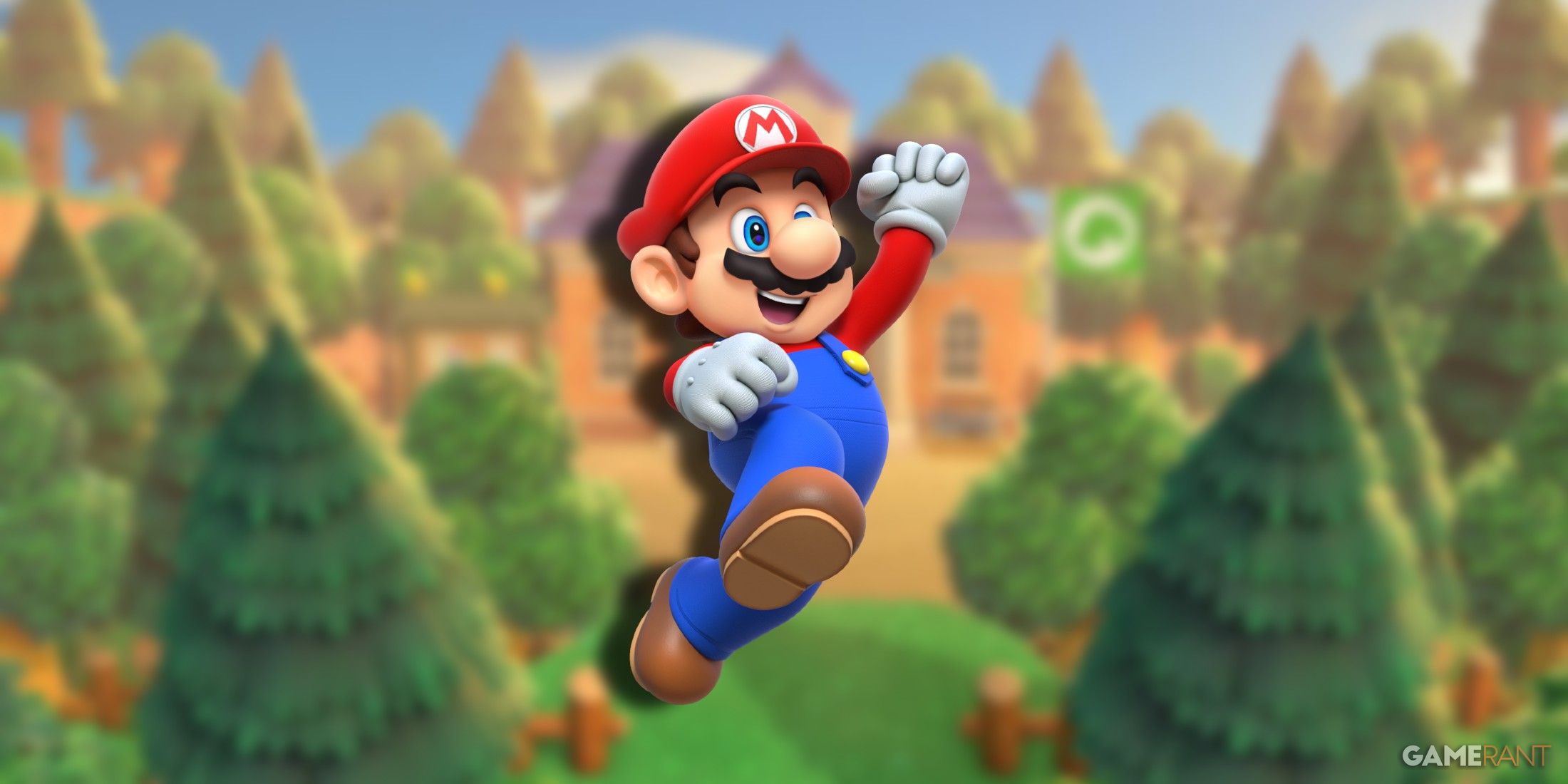Geek Native has been running the RPG Publisher Spotlight since 2019 and has not missed a month. Our patrons make it possible.
The goal is to find and shine a light on publishers and creators who might not be the big-name publishers competing against the colossus that is Wizards of the Coast. Often, these are companies that publish out of love for the hobby, in a fight for business survival, or as a showcase for gems of talent held aloft by dedicated fans.

Interviews with talent like make me proud of the six years of Spotlight and the patrons who vote each month for candidates. Julien is an expert game designer (video and tabletop), an author, and has barely scratched the surface of English-language TTRPGs.
You’ll enjoy the interview.
Hi Geek Native, thank you for having me!
So, I’m Julien Pirou and Empyreal Media Productions is my imprint for self-published tabletop roleplaying games and other things (for instance ambient soundtracks for said games).
My day job is as a writer and creative director in the video game industry, but I’ve also done a bunch of different things over the years, from hosting TV shows on an independent, proudly nerdy channel called Nolife (which aired from 2007 to 2018) or writing for various magazines (usually about games). I also wrote a book on the history of tabletop roleplaying titled La Grande Aventure du Jeu de Rôle (2020) and another on the life and works of manga artist Leiji Matsumoto (2023), both for Ynnis Éditions.
When I started toying with the idea of writing and self-publishing my own tabletop RPG, I started looking for a name under which to release. I wasn’t comfortable with putting something like “Julien Pirou presents” right there on the cover. I went through several potential names, usually to discover they were already used by another publisher or game company.
At the time, I was working on Lore & Legacy. The game’s world didn’t have a name yet, but I knew magic in that universe would be related to the concept of Aether and something called the aetheric field. Of course, “Aether” (in its various spellings) is a very common term in gaming circles, so I couldn’t use it directly. I started looking for other words within that lexical field, and came across “empyreal” which immediately caught my attention. I liked the sound of it, and as you mentioned, the fact it could be used in both French and English.
In the end, picking “Empyreal” as the imprint’s name also led me to calling the world of Lore & Legacy “Empyrea”.
I worked almost 10 years for Ubisoft, where I started as a level designer on Heroes of Might & Magic before joining the writing and creative teams, and later I moved to the editorial department to help with worldbuilding and story development. Eventually I started to feel like I was running in circles and that I needed to explore other spaces. There was also the fact I didn’t feel very excited with the games the company was making anymore.
I left Ubisoft with the intention of doing freelance work in the game industry, but early on I had some time in-between gigs for more personal projects. As an enthusiastic roleplayer and game master for two decades (my first TTRPG was Shadowrun 3rd edition), and having had a couple of experiences as a freelance writer on games like Earthdawn and Castle Falkenstein, I felt ready to start writing my own game.
I often say writing TTRPG, especially self-published ones, has also been good for my mental health. The video game industry can be tough on writers and creative types. There are many cooks in the kitchen (both internally and externally), and you’re constantly required to make changes and compromises. Sometimes you can feel your work as a writer or a creative is not really taken seriously or respected.
As a result, the released video game can be very different from what you originally envisioned, and that can be frustrating as you barely recognize the world and characters you once wrote. I found that having a space where I can do what I want, and publish it exactly as I want it, is quite liberating.
I think having some experience playing a TTRPG, especially as a game master, is tremendously useful to work on a video game. Because it teaches a very important lesson: it has to be about the players.
When I create a world for a video game, I approach the task the same way I would my tabletop projects. For me, it’s less about creating a “frozen” world and “set in stone” story than creating a toolbox for the game designers to conceive meaningful experiences and ultimately interesting and entertaining stories for the players.
One thing I noticed when working with writers coming from other industries — comic book writers for instance, or people coming from the worlds of TV or film — is that they often see the story as a linear thing, where things must happen in a certain way because that’s how stories are usually written, instead of leaving space for the players to make their own story. So, I think there’s a natural bridge from TTRPG writing and design to video game design, and it’s no surprise many of the great video game designers and writers of the 90s got their start in roleplaying games.
On the other hand, I often use methods learned from video game design and level design when putting together rules and adventures for my TTRPG. And of course, video games I played have been a strong inspiration (my science-fantasy game Lore & Legacy owes a lot to Phantasy Star and the early Might & Magic games, especially the World of Xeen diptych which had a very strong sci-fi vibe despite still having elves and orcs). So, it definitely works both ways.
I always enjoyed the dieselpunk aesthetics in things like The Rocketeer, Sky Captain, and especially Crimson Skies, one of my favourite gaming universes. Thanks to Crimson Skies, I developed a fascination for aircraft prototypes from the 1930s and 1940s. I started to collect books on the subject, notably Crécy Publishing’s Secret Projects series. It was a period of great innovation but also wild experimentation, where engineers would try anything and everything if it could help their country get an edge over the others.
Then there’s the fact I grew up watching an anime called Space Pirate Captain Harlock, created by Leiji Matsumoto. As mentioned earlier, I remained an admirer of Matsumoto’s works, to the point I wrote a book about him! I was even lucky enough to meet him a couple of times before he passed away in 2023. So, space pirates were definitely a theme that was dear to my heart.
So basically, these things came together: a bit of the Crimson Skies dieselpunk / art deco aesthetics, a bit of Captain Harlock, some Firefly and Northwest Smith (the original space smuggler created by C.L. Moore in the actual 1930s) added to the mix, and thus The Banner of Freedom was born!
I like to say nothing is ever born in a vacuum, even tabletop roleplaying games. This setting where space pirates lead the fight against the rise of imperialism and totalitarianism is the Solar system was very much inspired by what’s been going on in the real world in the last few years.
The concept of Heartless came to me while I was finishing Planète Caravane, which was both an atlas and a campaign for Lore & Legacy. It was quite a big book (more than 450 pages), and after being done with it I strongly needed a change a scenery.
Around that time, I found myself replaying some of the early video games by From Software, like King’s Field and Shadow Tower. I really enjoyed this kind of old-school dark fantasy setting, which also reminded of things like the first two Diablo, Hexen or, on the TTRPG side, Ravenloft. From there the idea of writing a game in that vein started to grow in the back of my mind.
I was also thinking of the “rogue-like” mechanics in video games, and whether they would work in a TTRPG. Often, the players are worried to lose their characters if they die, and as a result become a bit risk averse. This led to the idea of a TTRPG where the characters are essentially immortal — they can be defeated, but they will “respawn” after a while — however they are living on borrowed time, so to speak. In Heartless, death is cheap but time is precious. So, you have to be on the move, take risks and “go for it”.
Apart from the nature of the player characters themselves — who are the Heartless of the title, revenants returning from the underworld for a limited time — Heartless is a game of powers and combos. The Heartless are supernatural beings, they have access to a range of magic abilities that can be combined to devastating effects. It’s a game where it’s OK if the PCs are overpowered, because they are supposed to be these incredibly powerful undead superheroes, in a sense. But the clock is always ticking…
Being revenants, the PCs also have weaknesses against certain magical elements. The game’s setting has six elements, working in pairs: Fire / Cold, Purity / Corruption, Sacred / Profane. Depending on the character’s past, they will have one or more weaknesses to these elements. The Heartless have been unable to find eternal rest as there’s something, some sin or regret, still tethering them to the mortal world. They return to the Kingdom of Eridian not only to free the innocents from the forces of Hell and other evils, but also because they seek redemption for themselves…
Essentially, I created Empyreal to be able to write and publish anything that inspires me. You could say the sky’s the limit – which is another good rationale for the choice of the name, come to think of it! 😊
As of now, only the quick-start guide and core rulebook of Lore & Legacy are available in English. I translated the first one myself, and hired a translator for the rulebook. I wish I could offer the rest of my catalogue – or at least the core books – in English, but I haven’t found the time or budget to make that a reality yet. But I haven’t given up hope.
There’s also the fact, as you mention, that marketing my games to the English-speaking TTRPG communities also requires a lot of work. I know the French scene quite well, I’m active on the main forums and social networks. But I don’t really have the time to do the same thing on English-speaking platforms. Maybe someday I’ll sell enough games to hire a community manager!
I must say, it was a delightful surprise. For context, Picsou is the French name of the Disney character Scrooge McDuck. He was a pretty popular character here when I was a child, and the magazine has been running for more than 50 years.
I grew up reading Uncle Scrooge comics in the magazine and the works of Carl Barks and Don Rosa played a huge part in making me want to become a storyteller. So, when a journalist from Picsou contacted me to talk about roleplaying games (following the release of La Grande Aventure du Jeu de Rôle), it felt like I was giving a high-five to my 8-year-old self.
On top of it, TTRPG were quite maligned when I was a kid (we had our own version of the “Satanic Panic” in the late 80s and early 90s), so being able to shine a positive light on the hobby in a popular children’s magazine was truly a highlight. Possibly one of the things I’m the proudest of.
If the mention of my name makes people think “he created interesting worlds to play in”, I think I’ll have achieved something pretty nice.
The Banner of Freedom tool a bit longer than I hoped to complete — my goal was to release it in December 2024, it only came out in June 2025. As a result, a number of projects have also been pushed back. I’m no Heartless, but I’m still running after time!
In the pipeline is yet another game I call Capillotracté (which can be translated as “Far-Fetched” or “Harebrained”), a “comedy” TTRPG where the players are actually encouraged to come up with zany ideas and cockamamie plans. It will be a smaller game than the previous ones, pretty light in terms of rules and universe, so I hope to have it ready for Christmas.
Apart from that, I have a few supplements in the pipeline for the other games too. There will solo rules for Heartless, a supplement to help flesh out the villages of Eridian and their oppressed denizens, and a campaign taking the revenants to the Nine Hells for a big showdown. There’s also Necropolis, a big “West Marches”-style adventure for Lore & Legacy which will conclude the metaplot started with the base game 5 years ago, leading the adventurers of the Free-Lancers’ Guild to venture into the ruins of a lost civilization to face the “Big Bad” of the setting.
And of course, there will be more content for The Banner as well. People have been asking for adventure modules for instance, so I’ll get to that eventually (but maybe after a short break :p).
I’m not necessarily interested in writing supplements for the sake of writing supplements, but as long as I’m having ideas and fun putting them together — and of course as long as the players are happy with what I’m doing — I’m happy to keep exploring these worlds.
Thank you, Julien!
